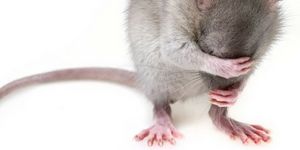Old Cling Wrap Works Better, and It Is Toxic
As people of the older generation would say the "old" cling wrap worked better, they are correct. The last version of the food-wrapping film contains a compound called polyvinylidene chloride, or PVDC.
Since its accidental discovery in 1933, PVDC has been widely used household and industrial products. A thin PVDC plastic film permits a minimum amount of water vapor, flavor molecules, and oxygen to travel through. This feature effectively slows down food spoilage and helps food retain its flavor and aroma.
As a lot of PVDC products started to accumulate in the waste pile and get incinerated, people began to realize the burning them would release vapors of sickening smell. In the fume, there is a toxic component known as HCl or hydrochloric acid. It can cause a headache if inhaled briefly, and possibly cancer if the exposure is long term.
After some research, S.C. Johnson the owner of Cling Wrap trademark came up with a new formula that uses chlorine-free polyethylene. The new component makes the wrap more environmentally friendly, but its chemical structure allows more gaseous molecules to travel between inside and outside. The result? Your left-over food won't stay as fresh as they used to be.
Source: SciShow via Youtube








